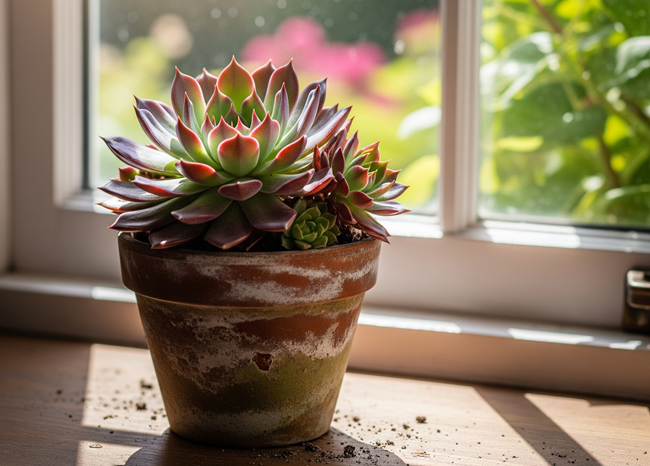Most people choose succulents for house plants because they are low maintenance and require little care. Furthermore, they also live longer than most plants and many succulent owners have had plants for long enough that they don’t even remember how long they’ve had them.

The life of succulents varies since there are thousands of different species and many can live indefinitely if they receive the proper care. An example is “Granddaddy”, which used to be the largest and oldest saguaro cactus in America and had survived in the Saguaro National Monument East for approximately 300 years.
How Long Do Succulents Live?
To say it simply, it really depends on the type of succulent itself and the care given. Most succulents are perennial plants meaning they can live for years with the right care. For instance, jade plants, money plants, or the Crassula ovata, have a natural lifespan of 70 to 100 years. Meanwhile, some cactuses can live for centuries just like “Granddaddy” which survived twice as long as the average saguaro lives. Most monocarpic succulents – succulents that only flower once and then continue to die- can live from 10 to 100 years. My own Hen and Chicks (Supervivum) bloomed after 3 years. Since I was still a newbie back then, I let it dry out and die.
Although some succulents have a shorter lifespan, their offshoots and plantlets can be propagated and can live anew. Technically speaking, these new plants can be considered that same plant, even if they are a different generation of it.
Lifespan of Some Common Succulents
- Aloe Vera – 10 to 20 years
- Crassula ovata or Jade plants – 20 to 100 years
- Christmas Cactus – Minimum of 30 years
- Living Stones – 40 to 50 years
- Barrel Cactus – 50 to 100 years
- Hen and Chicks – 2 to 4 years
- Agave Americana – 40 to 100 years
Increasing Succulent Plant Lifespan
Succulents may have an average lifespan, but it doesn’t mean that they are guaranteed to live for that amount of time. It still depends on how you take care of them. Giving them the proper care requires knowing the species you are dealing with and understanding that each type has its own ideal conditions where they can thrive.
Choose the Right Pot and Soil
Always pick a container or pot with the excellent drainage system. It doesn’t mean that the pot must have giant holes in it, but it has to be breathable so no moisture gets trapped inside. Most of my succulents are in terracotta pots and require more waterings. Especially the ones that are in direct sunlight, which dries them out quickly.
Lindsey Hyland is the owner of Urban Organic Yield. You can visit her website at UrbanOrganicYield.com.




Comment here